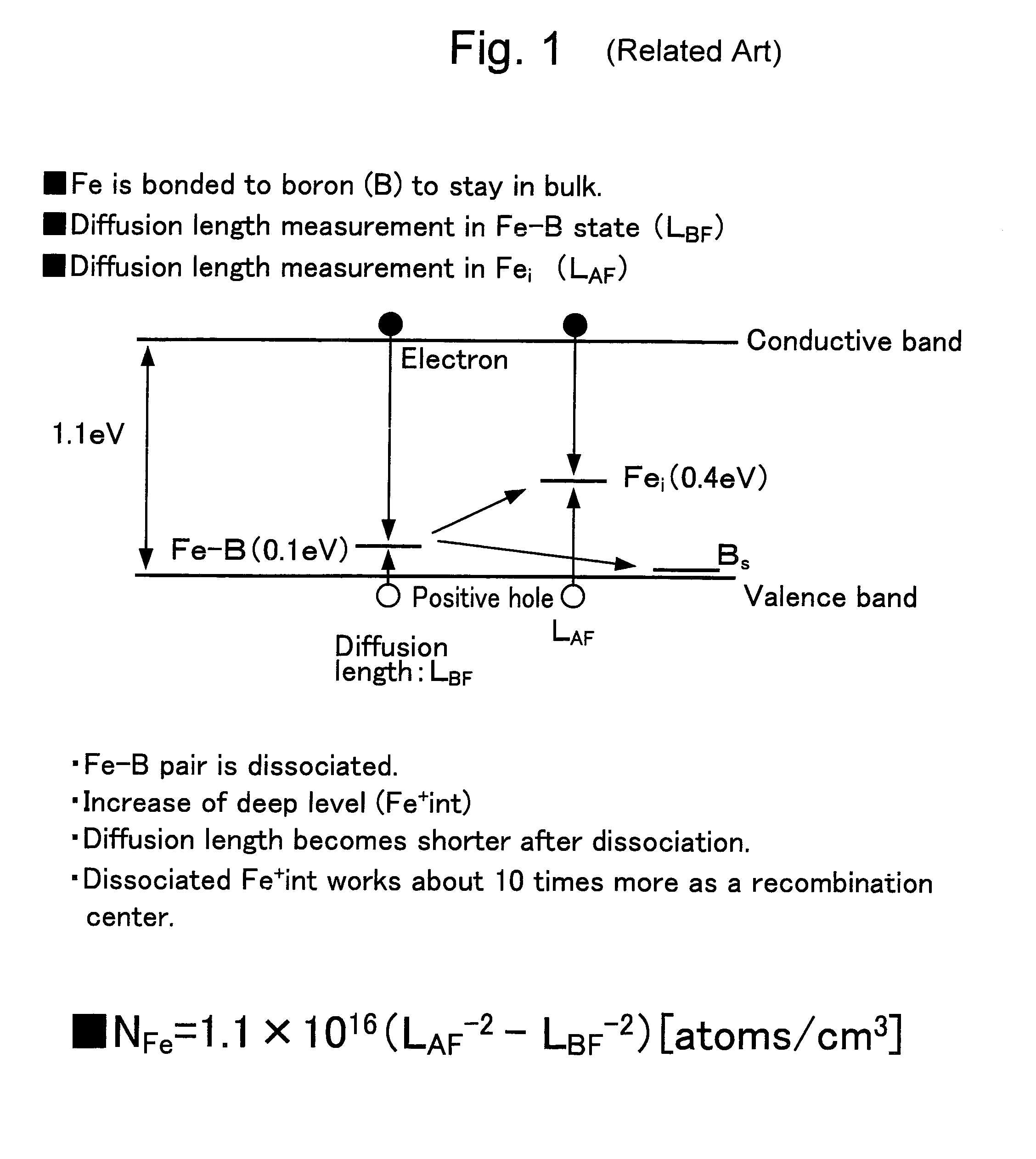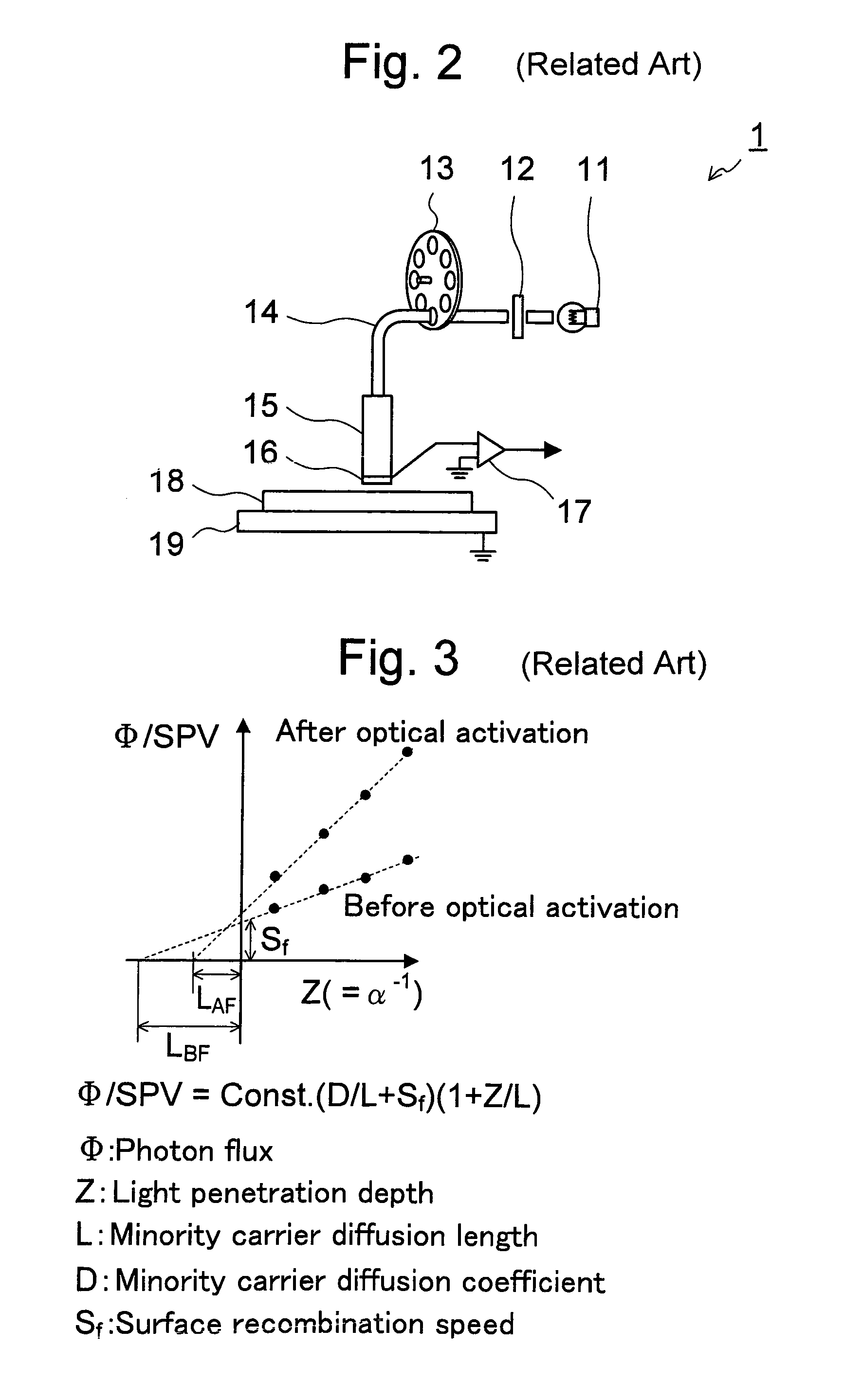Method for measuring impurity metal concentration
a technology of impurity metal and concentration, which is applied in the direction of instrumentation, semiconductor/solid-state device testing/measurement, nuclear elements, etc., can solve the problems of longer elapsed time and longer period of tim
- Summary
- Abstract
- Description
- Claims
- Application Information
AI Technical Summary
Benefits of technology
Problems solved by technology
Method used
Image
Examples
simulation example 1
[0096]The inventors conducted a simulation to show that the recombination of the interstitial irons with borons may proceed faster as the electric resistivity of the silicon wafer is lower and as the temperature of the silicon wafer is higher. FIG. 9 illustrates actual results of the simulation. For example, in the case of the silicon wafer being kept at 300 K and having the electric resistivity of 11 Ω·cm, LAF / LBF=0.0420 immediately after the activation (t=0.1 min) as opposed to LAF / LBF=0.0487 at t=200.1 min such that the change thereof is small (a changing rate is 16.0%). On the other hand, in the case of the silicon wafer having the electric resistivity of 1 Ω·cm, LAF / LBF=0.1328 immediately after the activation (t=0.1 min) as opposed to LAF / LBF=0.5105 at t=200.1 min such that the change thereof is huge (a changing rate is 284.4%). This shows that the recombination of Fe—B pairs proceeds faster in the silicon wafer having a lower rigistivity. Also, in the case of the silicon wafer...
experiment 1
[Experiment 1]
[0097]The inventors made the measurement of the iron concentration as an experimental example by the SPV method under various conditions with the correction according to the present invention and compared them with the measured values by the DLTS method. FIGS. 10A, 10B, 11A and 11B show the results. A p-type silicon wafer doped with boron as a dopant was used.
[0098]The measurements of the iron concentrations were made at from the light irradiation (optical activation) to the time having elapsed for 60 min with various kinds of specimens having iron concentrations from an order of 1×1011 to an order of 1×1014. The temperatures of the specimens were from 28.4 Celsius to 29.9 Celsius. As shown in FIGS. 13A and 13B, plots with the conventional correction (by the equation (1)) are lower than the measured values of the iron concentration by the DLTS method while the plots with a correction according to the present invention match well with the measured values of the iron con...
PUM
| Property | Measurement | Unit |
|---|---|---|
| band gap | aaaaa | aaaaa |
| diameter | aaaaa | aaaaa |
| electric resistivity | aaaaa | aaaaa |
Abstract
Description
Claims
Application Information
 Login to View More
Login to View More - R&D
- Intellectual Property
- Life Sciences
- Materials
- Tech Scout
- Unparalleled Data Quality
- Higher Quality Content
- 60% Fewer Hallucinations
Browse by: Latest US Patents, China's latest patents, Technical Efficacy Thesaurus, Application Domain, Technology Topic, Popular Technical Reports.
© 2025 PatSnap. All rights reserved.Legal|Privacy policy|Modern Slavery Act Transparency Statement|Sitemap|About US| Contact US: help@patsnap.com



